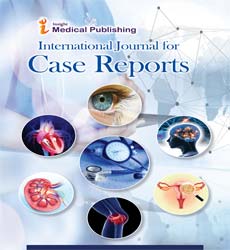Review of Physicians Decision Making while Treating Chronic Diseases
Christopher C. Lamb*
1Department of Management and Entrepreneurship, Weatherhead School of Management, Case Western Reserve University, Cleveland, Ohio, USA
- *Corresponding Author:
- Christopher C. Lamb, Department of Management and Entrepreneurship, Weatherhead School of Management, Case Western Reserve University, Cleveland, Ohio, USA, Telephone: 857-756-4133 E-mail: ccl48@case.edu
Received Date: July 16, 2021; Accepted Date: July 30, 2021; Published Date: August 06, 2021
Citation: Lamb CC (2021) Review of Physicians Decision Making while Treating Chronic Diseases. Int J Case Rep Vol.5 No.5: 52.
Description
Shared Decision-Making (SDM) between physicians and their patients is gaining acceptance as a positive effect on the management of chronic diseases [1-6]. However, the factors that encourage SDM, the effectiveness it may be at improving health outcomes, or how cost-effectiveness of SDM is still underexplored. By understanding what factors predict when physicians implement SDM, practices can be designed to improve the quality of chronic care which consumes most health care resources. To investigate the uses and applications of SDM in the management of a chronic disease, hemophilia was initially chosen and the influence of healthcare systems in the United States and the United Kingdom studied [7]. A qualitative research project was conducted using grounded theory to analyse the data. The data consisted of 24 interviews from treatment experts in the United States and the United Kingdom: twelve physicians from each country. The author interviewed each participant and extracted themes from the data that related to decision influencers. The results showed physicians view the applicability of treatment guidelines as limited because hemophilia lacks universal best practices due to patient context [7]. The US physicians appeared to be more influenced by patient preferences and limited by insurance company policies despite reporting their successful appeals. The UK physicians instead followed policies and standards of care more closely. Physicians in both countries commented that many of their patients had become highly knowledgeable of their disease [7]. The research suggests that there are different influences on decision-making between healthcare systems; patients and overarching healthcare systems play a major role in patient-physician decision making when treating hemophilia [7]. Following the hemophilia study, a sequential mixed method study was designed to examine physician decision-making when treating Primary Immune Deficiency, a significant chronic disease that affects over 30,000 patients in the US [8]. Three (3) studies were performed using both qualitative interviews and quantitative surveys of 345 physicians in the U.S. who treat Primary Immuno Deficiency (PID). Results confirmed that healthcare systems influence physician decision-making and that SDM is bounded by “nudging” bias, physician-patient health literacy alignment, and time to treat patients. Rational decision making, patient-centrism and certain physician traits increase patient participation, and patient-centrism and rational decision- making improve quality of care outcomes. SDM is sensitive to a physician’s age and specialty. Decisions regarding the treatment of chronic diseases can be seen along a continuum: paternalistic, informed, and shared [9]. Shared decision making is considered optimal, and several models of optimal care have been published [10-12]. Studies of two chronic diseases demonstrate the potential to improve SDM but there is substantial potential for bias which can impact how decisions are shared. Health care delivery systems should be aware of these biases and design protocols to mitigate their influence. Separate from bias, recent literature highlights the concern regarding “noise” in decision making and the variability of treatment both between physicians and when the same physician is deciding [13].
References
- Lamiani G, Bigi S, Mancuso ME, Coppola A, Vegni E (2017) Applying a deliberation model to the analysis of consultations in haemophilia: Implications for doctor-patient communication. Patient Educ Couns 100:690-695.
- Nossair F, Thornburg CD (2018) The role of patient and healthcare professionals in the era of new hemophilia treatments in developed and developing countries.Ther Adv Hematol 9: 239-249.
- Elwyn G, Frosch DL, Kobrin S, (2016) Implementing shared decision-making: consider all the consequences. Implement Sci 11: 114.
- Elwyn G, Durandet MA, Song J, Aarts J , Barr PJ, et al. (2017) A three-talk model for shared decision making: multistage consultation process Bmj 359: 4891.
- Gringeri A, Doralt J, Valentino LA, Crea R, Reininger AJ (2016) An innovative outcome-based care and procurement model of hemophilia management. Expert Rev Pharmacoecon Outcomes Res 16:337-45.
- Gringeri A, Mantovani LG, Scalone L, Mannucci PM (2003) Cost of care and quality of life for patients with hemophilia complicated by inhibitors: the COCIS Study Group.Blood 102:2358-2363.
- Lamb CC, Wolfberg A, Lyytinen K (2019) UK vs US physician decision-making in the treatment of haemophilia. Haemophilia 25: 616-625.
- Lamb C (2018) Still crossing the quality chasm: A mixed-methods study of physician decision-making when treating chronic diseases. Case Western Reserve University.
- Friesen-Storms JH, Bours GJJW, Weijden T, Beurskens AJHM (2015) Shared decision making in chronic care in the context of evidence based practice in nursing. Int J Nurs Stu. 52:393-402.
- Lamb CC, Wang Y, Lyytinen K (2019) Shared decision making: Does a physician's decision-making style affect patient participation in treatment choices for primary immunodeficiency? J Eval Clin Pract 25:1102-1110.
- Lamb CC, Wang Y, Lyytinen K (2018) Shared decision-making in the chronic care of Primary Immunodeficiency. Research outresearch1-9
- Lamb CC (2018) Physician–patient shared decision making in the treatment of primary immunodeficiency: An interview-based survey of immunologists. Lympho Sign Journal 5: 100-114.
- Kahneman D (2016) Harvard Bus Rev 38-46.
Open Access Journals
- Aquaculture & Veterinary Science
- Chemistry & Chemical Sciences
- Clinical Sciences
- Engineering
- General Science
- Genetics & Molecular Biology
- Health Care & Nursing
- Immunology & Microbiology
- Materials Science
- Mathematics & Physics
- Medical Sciences
- Neurology & Psychiatry
- Oncology & Cancer Science
- Pharmaceutical Sciences
